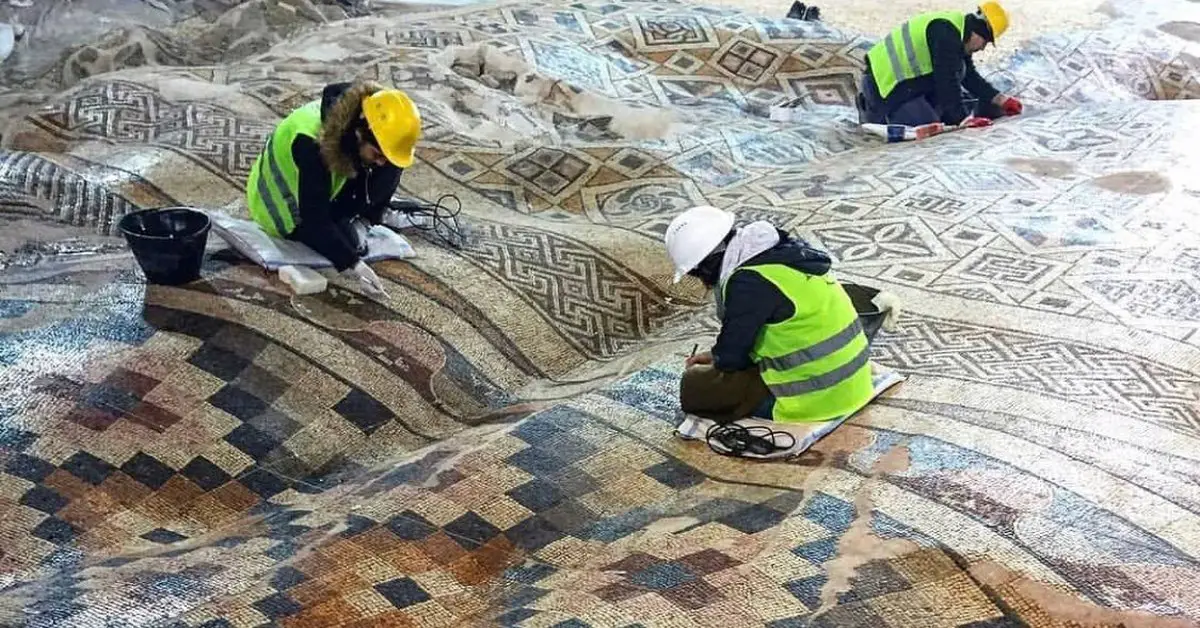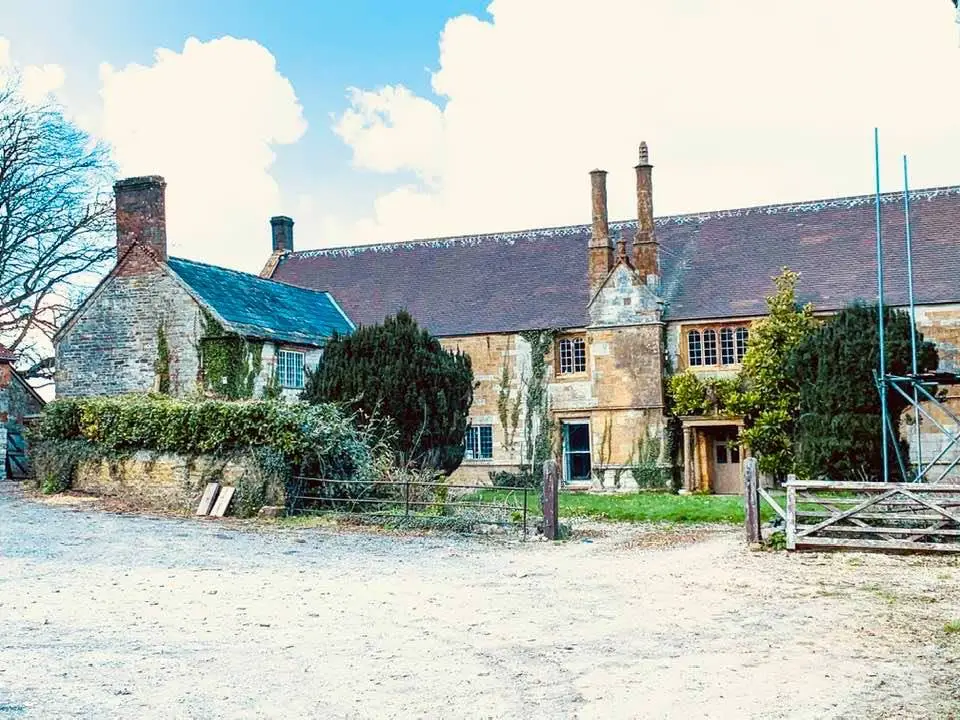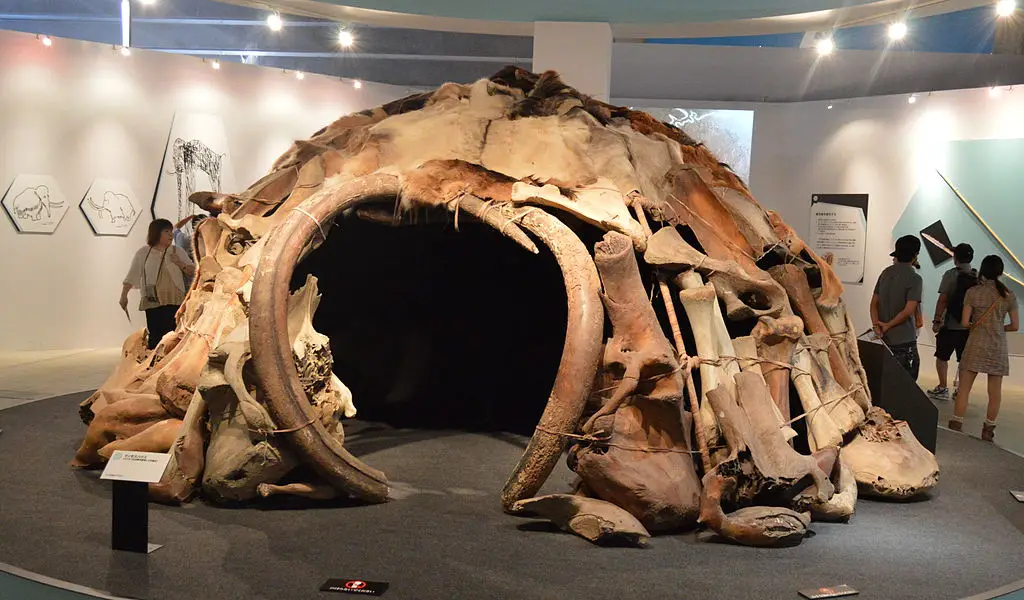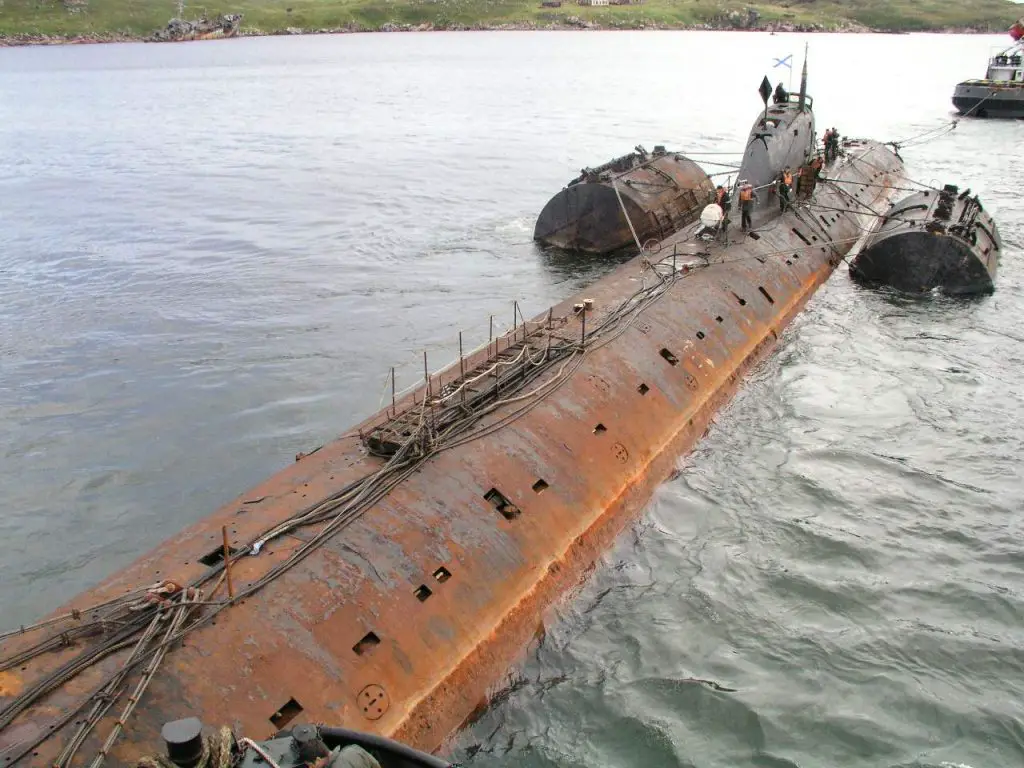Crusader Sword: In the Autumn of 2021, Shlomi Katzin of Atlit, Israel was scuba diving off the Carmel coast. Located at the foot of Mt. Carmel, at the edge of the Mediterranean Sea the area has become popular for scuba divers looking for ancient treasure.
What he found was astonishing. A well-preserved nine hundred year old Crusader sword. Discovered lying on the sand at the bottom of the sea about 600 feet from the shoreline.
Content

Perfect Condition
Not only that, he discovered anchor weights and an anchor from about four thousand years ago. Both from the late Bronze age. Proving that the beach has been attracting seagoing vessels for well over four thousand years according to sci-news.com.
The sword, made of iron, has a blade just over three feet long held on a twelve inch long hilt. The sword was found completely covered in attached marine life such as seashells and bits of coral.
According to smithsonianmag.com, IAA inspector Nir Distelfeld remarked, “The sword, which has been preserved in perfect condition, is a beautiful and rare find and evidently belonged to a Crusader knight.
It was found encrusted with marine organisms, but is apparently made of iron. It is exciting to encounter such a personal object..,” The weapon is not completely cleaned yet. When it is; it will be displayed to the public.

Seabed
One wonders how such an old object was never found before as it was just lying on the seabed. Jacob (Koby) Sharvit of the Israel Antiquities Authority, Marine Archaeology Unit tells us that the sands of the Mediterranean Sea shift. And, in even the smallest storms treasures such as the sword are constantly being covered and uncovered. Katzin just happened to be at the right place at the right time.
Kobi Sharvit, who heads the IAA’s Marine Archaeology Unit, said the Carmel coast, where the blade was found, provided shelter for ships during storms.
“These conditions have attracted merchant ships down the ages, leaving behind rich archaeological finds,”
Researchers were assuming it might be linked to the nearby crusaders’ citadel at Atlit’
“It’s heavy because of the stones that are glued to it and also because it’s [an] iron sword and very big. That means that the guy that held this sword and [fought] with it was very strong. I’m trying to imagine him on the field with all the armour on him and the sword and fighting with it.
“He should really be in good fitness, maybe they were bigger than us today but definitely stronger. And it’s amazing.”
Kobi Sharvit, head of IAA’s Marine Archaeology Unit
Fear
Israel21c.org tells us that when Sharvitz found the sword, he collected it from the water in fear of someone else finding it and not doing the right thing and because he didn’t want the sands to shift again, burying the sword for another nine hundred years.
He reported the find to the Israel Antiquities Authority as is required when an Israeli citizen finds an ancient artifact.
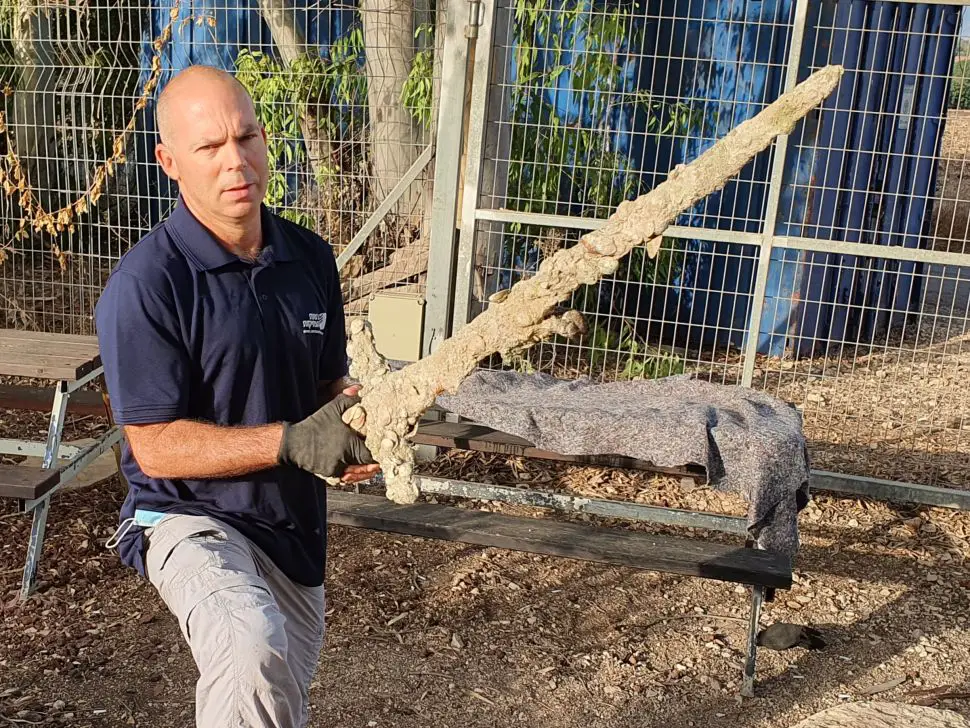
Viking
Distelfeld was appreciative that Katzin turned in the sword but would have preferred to have photographed the blade in situ (as it was found) as is proper archaeological custom. Even so, Katzin was awarded a certificate of appreciation for good citizenship.
The swords used by the Crusaders were fashioned after the Scandinavian Viking swords per websites.umich.edu. The blades were tapered to a point and had a shallow groove down the front of the blade called a fuller which helped to alleviate the weight of the sword and give more freedom of movement when slashing.
Sometimes the fuller went down both sides of the blade and often it would only go halfway down the blade. It wasn’t until later that the swords had larger pommels which allowed for use with two hands.
Crusader weapons were made in the cruciform shape and designed with the “golden triangles” and divine proportions common in architecture. The Knight’s Templar carried crusader swords, often simple with no decorative elements or those with intricate religious motifs.

The Crusades were religious wars in which Muslims and Christians both claimed holy sites such as Antioch in Syria and Jerusalem in Israel. The Crusades started about 1096 and continued on until 1291 consisting of eight major Crusades, the fourth of which conquered Constantinople.
During the Middle Ages, the Muslim world was vast and powerful. Its reach was from Spain to India.
Epicentre
Christians believed that Jerusalem was the place where Christ died and was buried.
The Church of the Holy Sepulchre is widely accepted as the location where his tomb was found. It wasn’t until the 4th century that Christian pilgrims were first mentioned.
Jerusalem to Muslims, is their third most holy city. Prophet Muhammad ascended to heaven from Jerusalem. The clash of faiths and beliefs has been on going since 638 when Arab Muslims conquered the Holy Land. For Muslims, The Dome of the Rock and the Al-Aqsa mosque are their pilgrimages sites.
It is thought that in 1077 Muslim Seljuk Turks took control of the Holy Land.
Muslims made it next to impossible for Christian pilgrims to visit their places of faith. Many rumours and stories of Christians being mistreated spread throughout the Christian world.
Another Article From Us: The House of Medieval Knights Hospitaller
If you like this article, then please follow us on Facebook, Instagram
Religious leaders urged the pope to take action to protect the Holy Shrine.Therefore in 1095, Pope Urban II guaranteed the knights of Europe forgiveness of their sins if they were to gather an army and went on a Crusade to regain Jerusalem for Christianity. Many knights from across Europe answered the call. The stitched red crosses to their tunics.
Interestingly, kings would encourage bothersome and troublesome knights to join the Crusades. It was a coinvent way to get rid of knights – often permanently.
